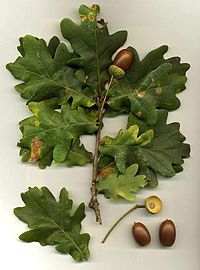
Photo from wikipedia
Abstract The predator satiation hypothesis (PSH) and the seed dispersal hypothesis (SDH) are widely adopted to predict the effects of masting on seed dispersal. However, the effects of masting composition… Click to show full abstract
Abstract The predator satiation hypothesis (PSH) and the seed dispersal hypothesis (SDH) are widely adopted to predict the effects of masting on seed dispersal. However, the effects of masting composition on rodent-mediated seed dispersal interaction of sympatric tree species are largely overlooked in testing the two hypotheses. Here, masting in Quercus mongolica and Corylus mandshurica with contrasting seed traits was studied over two masting years and three non-masting years in a temperate deciduous forest in northeastern China, to investigate how masting composition regulates the indirect seed-seed interactions of sympatric tree species mediated by granivorous rodents. Our results showed that more seeds of Q. mongolica survived in seed stations and were less likely to be dispersed in masting years, well supporting the idea of PSH. However, seed dispersal of C. mandshurica was in congruence with the prediction of the SDH because of increased seed dispersal probability and dispersal distances in masting years. Rodents scatterhoarded more seeds of C. mandshurica not only in its own masting years but also in the masting years of another sympatric plant species, Q. mongolica, resulting in a positive relationship between seed caching and the sum of per capita seed availability. Moreover, masting of Q. mongolica or C. mandshurica decreased the proportion of seeds eaten by predators, benefiting each other’s seed survival. In addition, seeds of Q. mongolica were dispersed farther in the masting years of C. mandshurica despite rare seedling establishment. Our study using two sympatric masting tree species provided evidence that the effects of masting can be potentially influences by seed-seed interactions between sympatric tree species. We recommend that future work tests the PSH and SDH using long term data of several sympatric tree species, emphasizing the role of seed traits and seed-seed interactions in determining the effects of seed masting on tree regeneration.
Journal Title: Forest Ecology and Management
Year Published: 2019
Link to full text (if available)
Share on Social Media: Sign Up to like & get
recommendations!